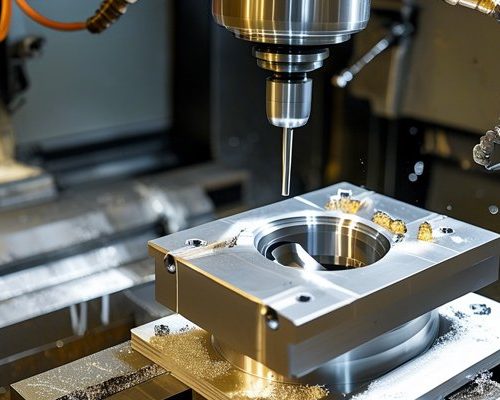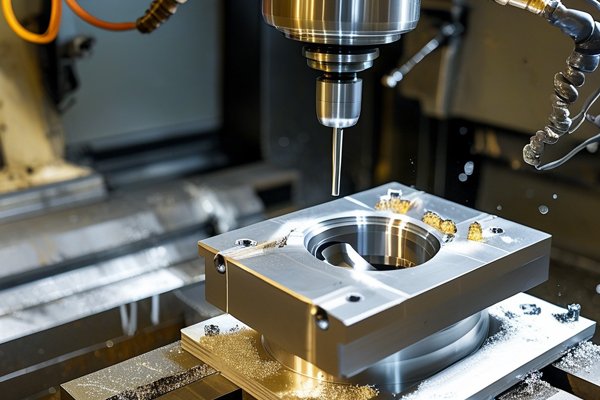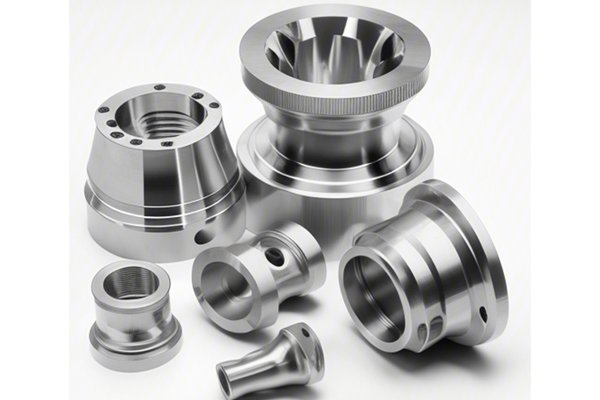Imagine a world where precision is paramount, and quality is non-negotiable. A place where technology and craftsmanship collide to produce mesmerizing, flawless metal components—that’s the magic of CNC aluminium machining. But what does this mean for you and your projects? Let’s dive into this intricate world together, uncovering the beauty and benefits of CNC aluminium machining.
What Is CNC Aluminium Machining?
CNC, or Computer Numerical Control, is a process that uses computer software to control machine tools. This technology revolutionized manufacturing, transforming how industries produce intricate components. When it comes to aluminium, CNC machining offers immense versatility, allowing for the creation of complex shapes and structures that would be otherwise challenging or impossible to make by hand.
Think of it as crafting a beautiful piece of art using precise digital tools rather than traditional chiseling. With CNC machining, the artistry is in the programming, resulting in a product that’s not only aesthetically pleasing but also functional.
The Importance of Aluminium
Aluminium, often regarded as the unsung hero of the metal world, boasts a myriad of properties that make it ideal for various applications. It’s lightweight, corrosion-resistant, and possesses excellent thermal and electrical conductivity. Its popularity spans sectors like aerospace, automotive, and electronics—essentially anywhere precision and performance are vital.
Imagine trying to build an airplane with steel; the sheer weight would be a burden. Now, picture that same airplane constructed with aluminium. It’s a breath of fresh air! The transition to aluminium is akin to trading in a bulky old sedan for a sleek, energy-efficient sports car.
How CNC Aluminium Machining Works
CNC aluminium machining is a meticulous process that starts with a digital 3D model of the desired component. This model is typically created using CAD (Computer-Aided Design) software. Once the model is ready, it’s converted into a set of instructions suitable for the CNC machine.
The Advantages of CNC Aluminium Machining
Precision and Accuracy
As mentioned earlier, one of the most significant advantages of CNC machining is the unmatched precision it offers. The machines operate on the principles of digital design, which eliminates human errors that often creep in during manual machining. This level of precision is comparable to trying to hit a bullseye with a well-calibrated bow and arrow—consistent results are guaranteed!
Customization Galore
With CNC aluminium machining, customization is at your fingertips. Gone are the days of one-size-fits-all. You have the flexibility to produce components tailored to specific requirements. From intricate designs with nuanced curves to simple, robust shapes, if you can dream it, you can machine it.
Efficiency and Speed
In today’s fast-paced world, efficiency is king. CNC machines not only work faster than human operators, but they also operate continuously without the need for breaks. Think of it like having a tireless worker who doesn’t even need a coffee break! This increase in speed translates to quicker production times and a reduced time to market.
Cost-Effectiveness
While the initial investment in CNC technology may seem hefty, the long-term savings are where the true value lies. Lower labor costs, minimal waste, and a consistent product quality lead to overall budget efficiencies—making CNC aluminium machining a wise investment.
Applications of CNC Aluminium Machining
Aerospace Industry
In the realm of aerospace, where safety and performance are paramount, aluminium components crafted via CNC machining shine brightly. From structural components to intricate engine parts, the ability to produce lightweight, durable pieces ensures optimal performance without compromising safety.
Automotive Sector

In the automotive world, the need for lightweight parts is critical. CNC machined aluminium components can enhance fuel efficiency while maintaining structural integrity. It’s akin to swapping out your heavy winter coat for a lightweight jacket—much easier to move!
Electronics Manufacturing
Electronics rely heavily on precise components with excellent conductivity. CNC aluminium machining allows for the production of tiny connectors and housings, ensuring devices function smoothly without overheating.
Consumer Goods
Finally, let’s not overlook the consumer goods sector. Everything from kitchen appliances to custom bicycles can benefit from CNC aluminium machining, providing both aesthetic appeal and practical functionality.
FAQs About CNC Aluminium Machining
Is CNC machining suitable for all types of aluminium?
Absolutely! CNC machining can handle various alloys of aluminium, catering to different needs. It’s important to select the right alloy based on the specific application, as each has distinct properties.
How does the pricing for CNC aluminium machining work?
Pricing varies based on complexity, volume, and specific requirements. Generally, you’ll find that custom components may carry a higher price tag, especially if intricate details are involved. However, the efficiency and precision often justify the cost.
Can CNC machinery be used for small-scale production?
Yes, CNC machining is perfect for both small and large-scale production. It allows for high precision in small batch runs, thus catering to both individual projects and mass manufacturing.
How can I ensure the quality of CNC machined parts?
Partner with reputable CNC machining services that have high-quality standards in place. Checking for certifications, customer reviews, and previous work can guide you towards making an informed choice.
Future Trends in CNC Aluminium Machining
As with most industries, CNC aluminium machining continuously evolves, embracing innovative technologies. Here are some trends to keep an eye on:
Automation and AI
The fusion of artificial intelligence with CNC machining promises to optimize processes further, enhance predictive maintenance, and minimize downtime. Imagine an intelligent factory where machines communicate, making decisions to improve efficiency—sounds like science fiction, right? But it’s quickly becoming reality.
Advanced Materials
Continuous research and technological advancements are leading to the exploration of new alloys and composite materials for even better performance. This could mean stronger, lighter components down the line.
Sustainability Focus
More manufacturers are prioritizing eco-friendly practices. Using recycled materials in CNC machining processes and minimizing waste can contribute to a more sustainable future.
Conclusion
CNC aluminium machining is a fascinating realm filled with endless possibilities. It blends technology and craftsmanship, resulting in incredible components that enhance numerous industries. Whether you’re creating components for aerospace or crafting custom consumer products, understanding the power of CNC aluminium machining puts you at the forefront of manufacturing innovation.
So, the next time you marvel at a beautifully crafted aluminium part, remember the art and science behind it. CNC machining isn’t just a process; it’s a gateway to limitless opportunities in the world of manufacturing. Ready to dive in? Let’s start creating!



